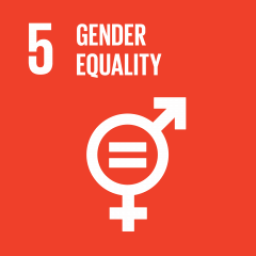SDG 5 - Gender Equality

Achieve gender equality and empower all women and girls
The region has made some progress toward achieving gender equality and empowering women and girls, particularly in education and health and to a lesser extent women’s participation in formal employment and national policy making. This is attributed to growing awareness of the need to address gender inequalities.
While almost all countries in the Pacific have adopted specific gender policies and strategies, the resources for integrating and implementing these priorities are limited. Budgets for national women’s offices are less than one percent of national appropriations.
Gender inequality is highlighted by the high prevalence rates of violence against women (more than 60 percent in Melanesia, and more than 40 percent in Polynesia and Micronesia). Sexual and reproductive health and rights issues also remain substantial challenges to be addressed under Goal 5. Fertility rates, especially teenage fertility, remain high in some parts of the region.
The Pacific Roadmap on Gender Statistics (2019) supports Pacific National Statistical Systems to generate gender data that meets users' needs to advance gender equality.
End all forms of discrimination against all women and girls everywhere
Indicator 5.1.1: Whether or not legal frameworks are in place to promote, enforce and monitor equality and non?discrimination on the basis of sex
Visualisation(s) not yet available
View data for indicator 5.1.1 on PDH.stat
Eliminate all forms of violence against all women and girls in the public and private spheres, including trafficking and sexual and other types of exploitation
Indicator 5.2.1: Proportion of ever-partnered women and girls aged 15 years and older subjected to physical, sexual or psychological violence by a current or former intimate partner in the previous 12 months, by form of violence and by age
![]() Download Metadata for indicator 5.2.1
Download Metadata for indicator 5.2.1
Indicator 5.2.2: Proportion of women and girls aged 15 years and older subjected to sexual violence by persons other than an intimate partner in the previous 12 months, by age and place of occurrence
Eliminate all harmful practices, such as child, early and forced marriage and female genital mutilation
Indicator 5.3.1: Proportion of women aged 20-24 years who were married or in a union before age 15 and before age 18
![]() Download Metadata for indicator 5.3.1
Download Metadata for indicator 5.3.1
Indicator 5.3.2: Proportion of girls and women aged 15-49 years who have undergone female genital mutilation/cutting, by age
NOTE: this indicator is not one of the 132 indicators in the Pacific SDG indicator subset
Recognize and value unpaid care and domestic work through the provision of public services, infrastructure and social protection policies and the promotion of shared responsibility within the household and the family as nationally appropriate
Indicator 5.4.1: Proportion of time spent on unpaid domestic and care work, by sex, age and location
Visualisation(s) not yet available
View 5.4.1 data on PDH.stat
Ensure women’s full and effective participation and equal opportunities for leadership at all levels of decision-making in political, economic and public life
Indicator 5.5.1: Proportion of seats held by women in national parliaments and local governments
Ensure universal access to sexual and reproductive health and reproductive rights as agreed in accordance with the Programme of Action of the International Conference on Population and Development and the Beijing Platform for Action and the outcome documents of their review conferences
Indicator 5.6.1: Proportion of women aged 15-49 years who make their own informed decisions regarding sexual relations, contraceptive use and reproductive health care
Visualisation(s) not yet available
View 5.6.1 data on PDH.stat
![]() Download Metadata for indicator 5.6.1
Download Metadata for indicator 5.6.1
Indicator 5.6.2: Number of countries with a reproductive health policy, guidelines and protocols for service delivery fully or partially resourced
NOTE: this is a Pacific Proxy Indicator modified from the global definition: Number of countries with laws and regulations that guarantee women aged 15-49 years access to sexual and reproductive health care, information and education
Undertake reforms to give women equal rights to economic resources, as well as access to ownership and control over land and other forms of property, financial services, inheritance and natural resources, in accordance with national laws
Indicator 5.A.1: (a) Proportion of total agricultural population with ownership or secure rights over agricultural land, by sex; and (b) share of women among owners or rights-bearers of agricultural land, by type of tenure
NOTE: this indicator is not one of the 132 indicators in the Pacific SDG indicator subset
Indicator 5.A.2: Proportion of countries where the legal framework (including customary law) guarantees women’s equal rights to land ownership and/or control
Visualisation(s) not yet available
View 5.A.2 data on PDH.stat
Enhance the use of enabling technology, in particular information and communications technology, to promote the empowerment of women
Indicator 5.B.1: Proportion of individuals who own a mobile telephone, by sex
Visualisation(s) not yet available
View data for indicator 5.b.1 on PDH.stat
Adopt and strengthen sound policies and enforceable legislation for the promotion of gender equality and the empowerment of all women and girls at all levels
Indicator 5.C.1: Proportion of countries with systems to track and make public allocations for gender equality and women’s empowerment
Visualisation(s) not yet available
Data not yet available